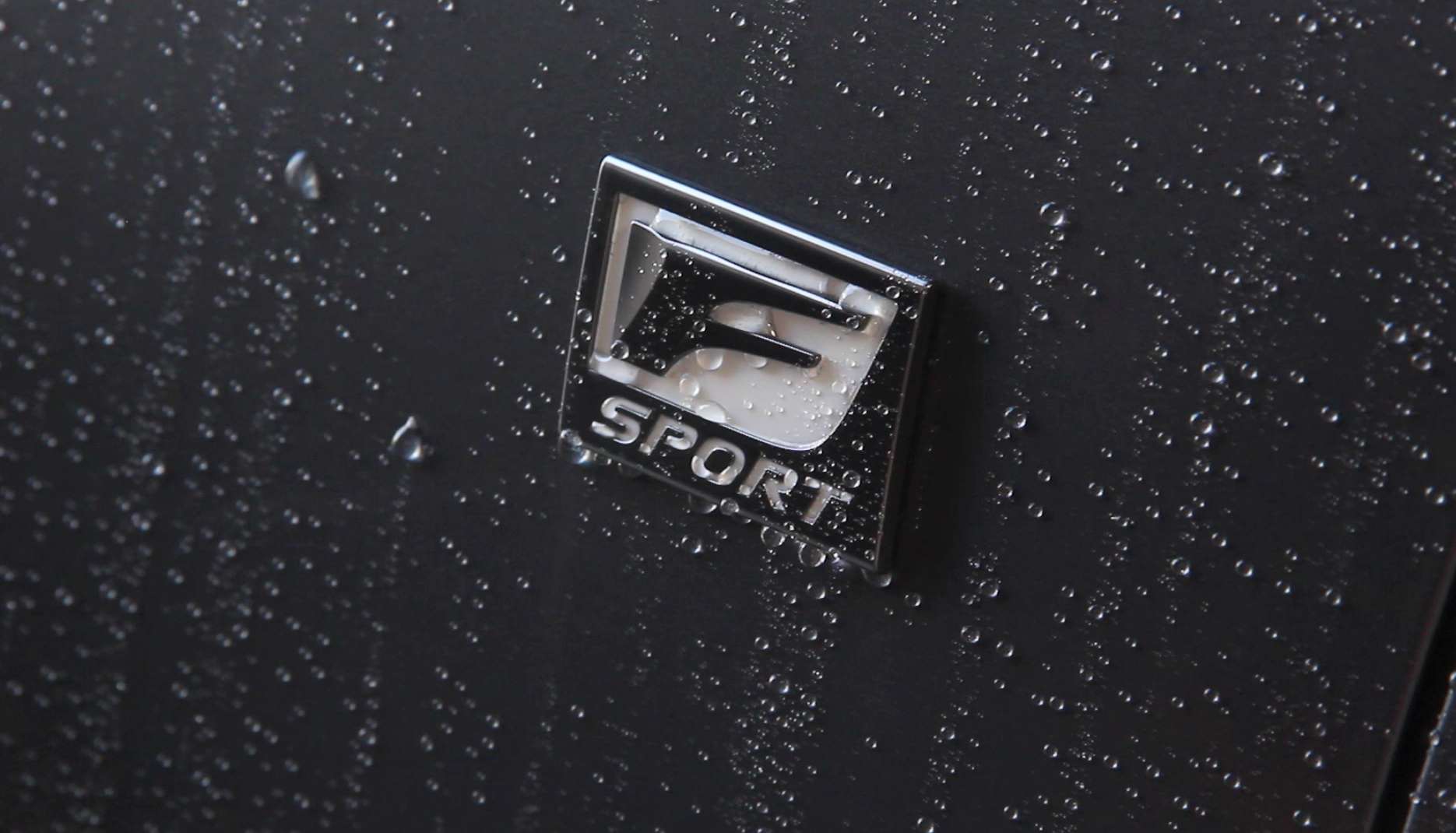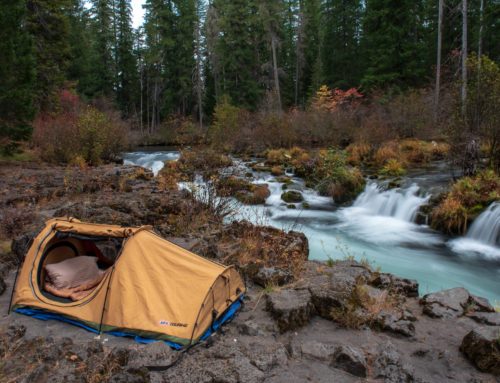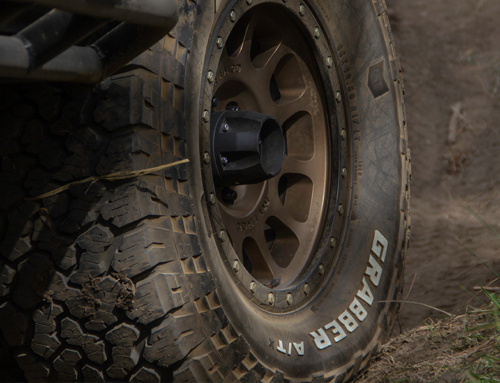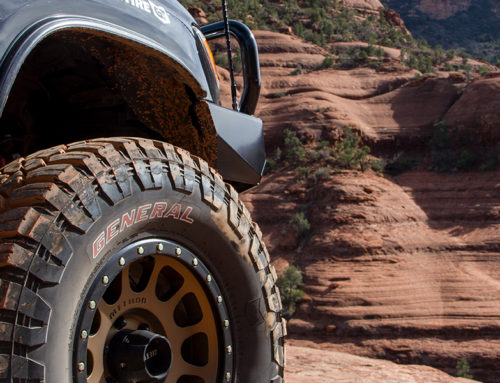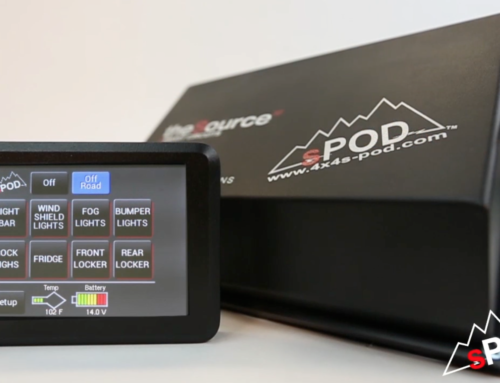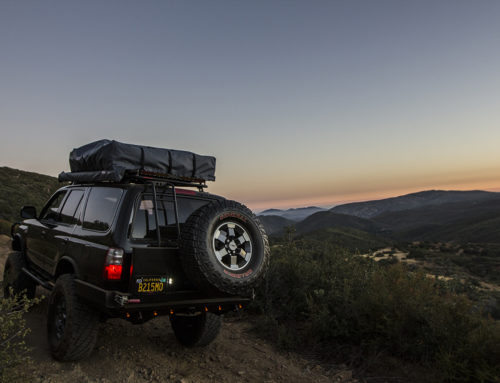It’s a usual departure from our hardware focus, but I promise it’s worthy.
From casual to hardcore, everyone’s preference is unique. When it comes to your rig’s paint however, it’s binary. You have your beaters – ridden hard and put away wet, or something you actually like to keep clean in between trips. Hey, there’s nothing wrong with that – it’s an investment piece! Unless it’s a ridiculous purpose-built machine, chances are your paint is an important factor of its value. The newer the vehicle, the more it rings true. And while most people are very familiar with common detailing buzzwords like clay bar, compound, polish, and wax, some of you will want to knock all that stuff off the table and replace it with ceramic.
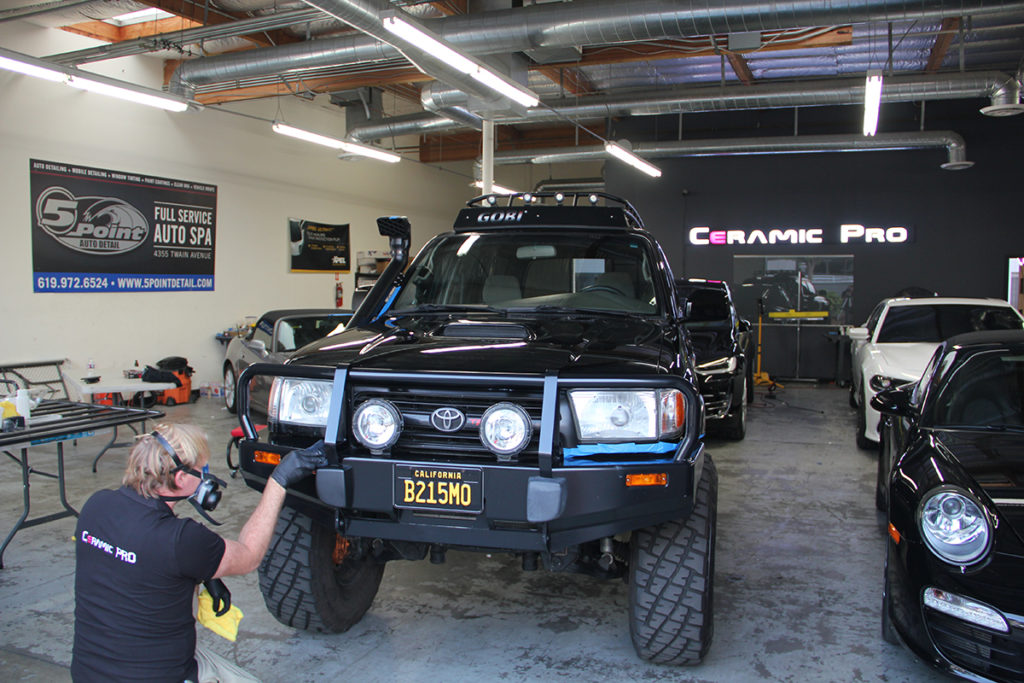
Coating the ARB bumper. Check out the portion he’s coated vs. the rest of the bumper.
Let’s get the basics out of the way. Ceramic coating is simply a total, long-term upgrade from traditional detailing, and then some. It enables sheen, durability and paint protection that no detail could ever match. After application, ceramic essentially dries into a glass-dominant coat. It is an advanced barrier between your paint, and the elements around it. Nerds will particularly like this video as it better explains the science behind the product.
Ceramic coating is in high demand in the luxury and exotic car communities, and it’s no mystery why. Richer color and legit paint protection is a damn good offer, and others are taking notice. From off road rigs to industrial vans, customers are now pouring in with all types of vehicles.

Taking a lighter and scratching a hood. (Left) uncoated; (Right)CeramicPro coated
Most of our friends are well aware we like clean rides. And while I’m waiting to repaint until coating the whole vehicle, a quick talk with CeramicPro had me driving to our local installer. Body paint is just the beginning for these guys. Accessories, powder coat, ABS plastic, brand new BMW leather, this stuff seemingly knows no bounds. With a new CBI Off Road Fab rear bumper, freshly powder coated, wrapped in a crate, what better time for an introduction.
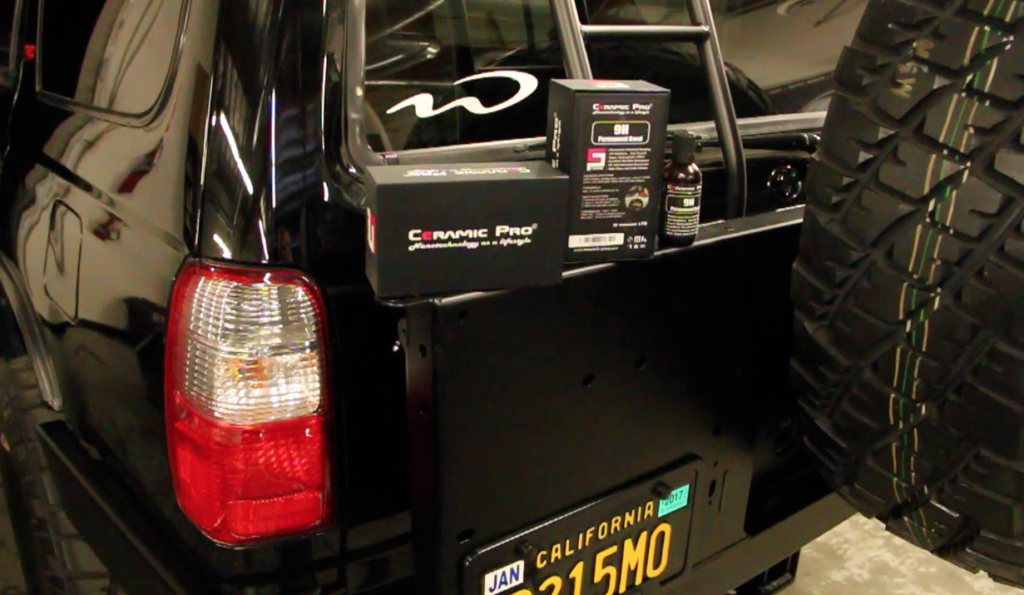
We drove the Lexus and 4Runner to 5 Point Auto Detail in San Diego and met with the team to discuss what pieces would get the ceramic loving. The new rear bumper would be coated in 9H, their flagship product commonly found on Teslas, Porsches, Lamborghinis and more. This would ensure a durable but invisible coat. For our ARB bumper, snorkel, and roof rack, we opted for the industrial strength formula. As far as finish is concerned, both coats are essentially invisible. Nearly 100% with the 9H with the industrial being about 90% inconspicuous.

Being present for the install was awesome. My front bumper has been blasted by the San Diego sun for a year straight, and as he applied the coat, a rich jet black tone returned to the finish. The same went for the snorkel. I had no idea this stuff worked on ABS plastic, but sure enough every application stroke brought out a rich, fresh black that looked better than the day I installed it. This was validated when we coated the rear bumper, days old powder coat was still made blacker, shinier and cleaner.
That whole story happened just over a year ago. Plenty of products can impress on the short term, but I was interested specifically in longevity so I’ve kept my mouth shut to see how this stuff held up.
Simply put, ceramic coating is the truth.
Aesthetics wise, all of the coated pieces including the snorkel have remained deep black and doesn’t show any signs of deterioration. Since it was hand applied with the front bumper install, the innermost sections of plate covered by the body were’t coated. It’s a tricky angle for a photo but a glaring before and after every time I open the hood. Even though the uncoated parts has been hidden from the sun, it’s already a light-black to almost gray. The rest of the bumper is still a deep black with minimal imperfections, despite thousands of miles through virtually every type of weather and trail.
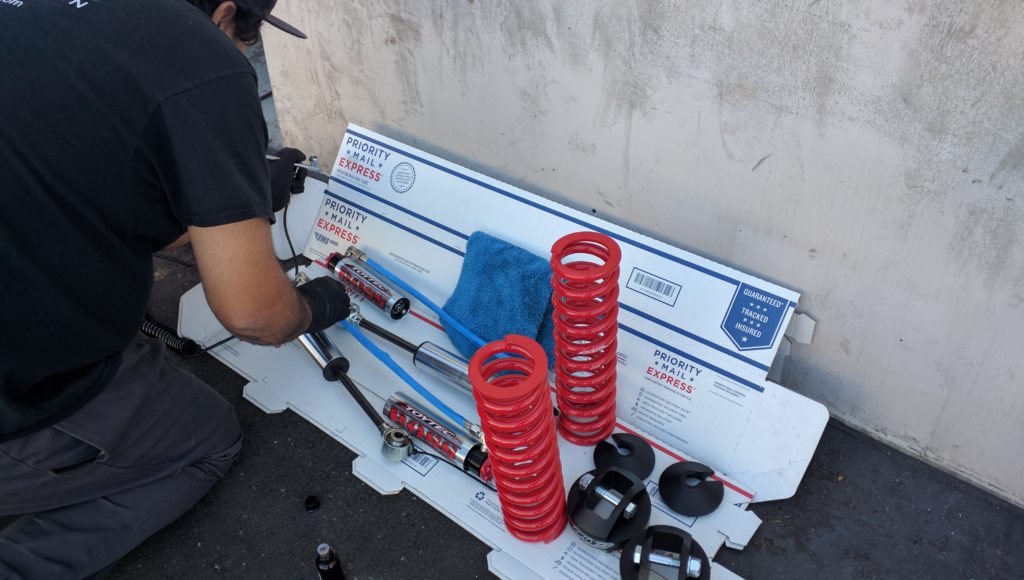
Shock bodies are typically coated in zinc to avoid corrosion and other damage to the finish. Still, enough time in the snow or near the ocean will cut through even dual coats eventually. After seeing the obvious effects of my other pieces, I took a pair of Toytec adjustable coilovers back to Ceramic Pro before ski season. When I pulled them off 6 months later to swap for their new remote reservoir coilovers, the bodies looked much better than any previous suspension after that amount of time. Suspension is particularly exposed to elements like road salt, and between our time spent in the snow and near the beach it’s an easy decision to add protection.
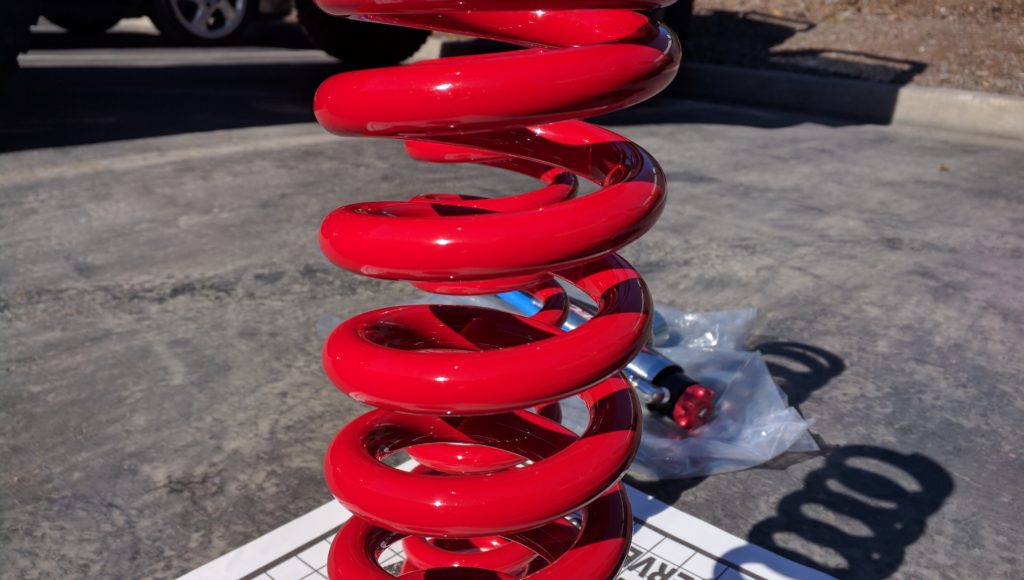
While ceramic coating has become popular among the entire luxury and exotic car groups, it makes sense that it’s hasn’t been so unanimous in the off road crowd where some sacrifice nice paint for just about any trail or obstacle. But popularity has been growing, and rightly so. Ceramic coating has both permanent and long-term benefits with your paint, and in a community where drivers see more than your random rock chip, it’s certainly worth the look. The technology has been proven and lauded through communities, and after a year of watching the results I’m sipping the kool-aid too.
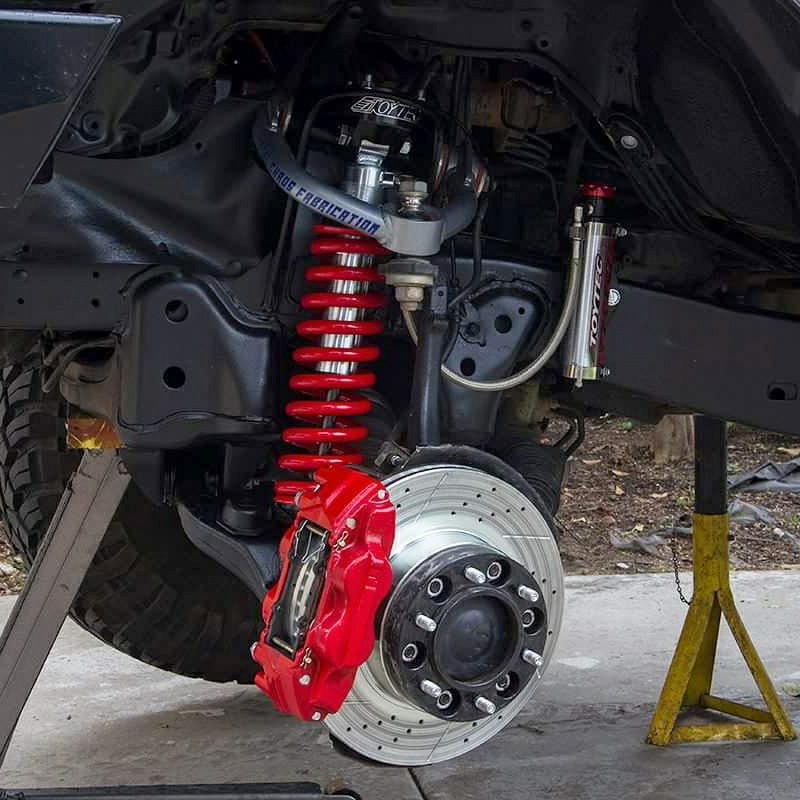
From paint, suspension, roof racks, wheels, snorkels, bumper, leather, and much more, pay your local installer a visit if you’re interested in retaining, and improving, your finish. Not to mention, cleaning becomes easier than ever. Thousands of miles of brake dust built up? One pass of the power washer and they’re back to new.
Ceramic is a very attractive product, especially when it’s constantly showcased by exotic cars, but there’s a slew of products in the off road world that would benefit from ceramic coating. I know a bunch of you are closet car-waxers and tire-shiners when you’re not posting from the trail. Or maybe you put stock into the crazy notion of protecting your investment. Either way, you owe it to yourself to check ceramic coating in person.
Here is CermicPro’s own Vice President of Sales showing us the coating process first-hand.


